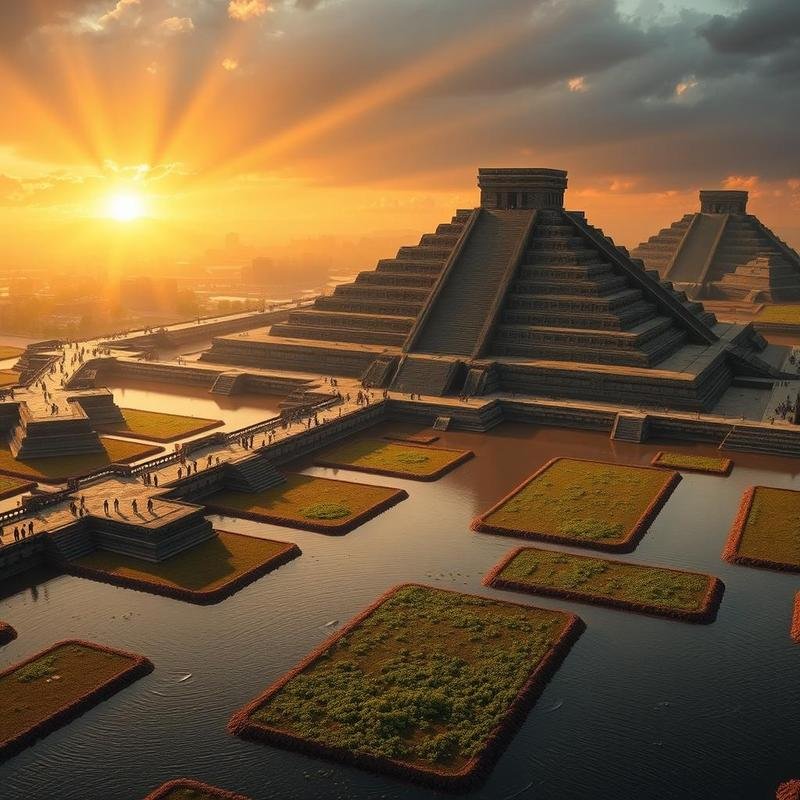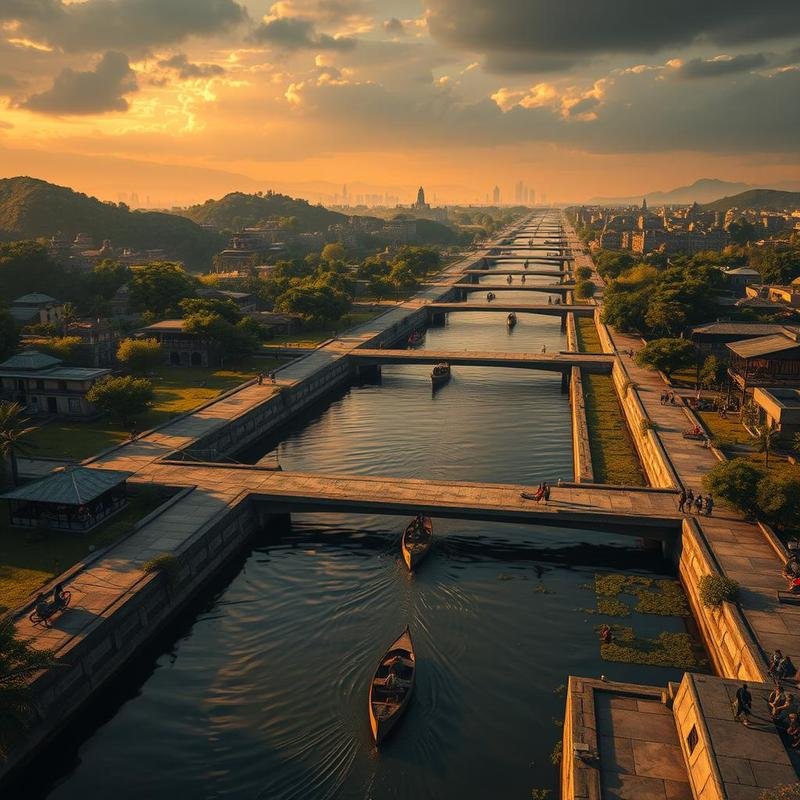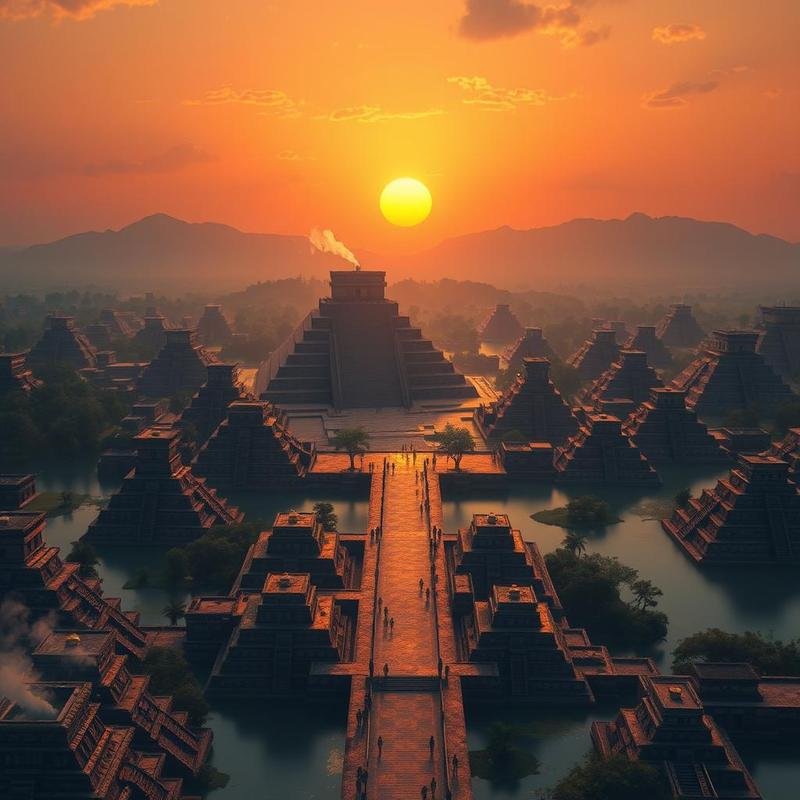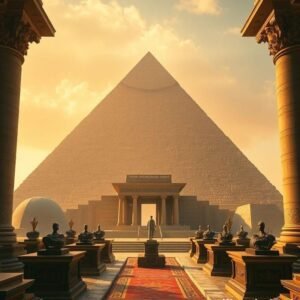Unveiling the Secrets of the Aztec City of Tenochtitlan

Tenochtitlan: Aztec City’s Amazing Engineering
The rise of the Aztec civilization and the meticulous construction of its capital, Tenochtitlan, exemplify exceptional engineering prowess and sophisticated societal organization. Situated on a small island in Lake Texcoco, Tenochtitlan’s creation represents a triumph of human ingenuity, transforming a seemingly inhospitable environment into a thriving metropolis—a feat unparalleled in its time. Understanding Tenochtitlan’s construction requires examination of the unique aspects of Aztec civilization, their resourcefulness, and their ambitious vision.
The Founding and Early Development of Tenochtitlan
According to Aztec legend, the Mexica people, who would eventually form the Aztec empire, arrived in the Valley of Mexico in the late 13th century CE. After a period of migration and subjugation under other powerful groups, they received an auspicious omen—an eagle perched on a prickly pear cactus devouring a serpent. This, interpreted as a divine prophecy, led them to establish their settlement on the island in Lake Texcoco around 1325 CE. This initial settlement, however, was rudimentary compared to the magnificent city that would follow.
The initial construction of Tenochtitlan was a monumental undertaking. The Aztecs faced the challenge of building on a marshy island with limited resources. They innovated with chinampas, artificial islands created by interweaving reeds, mud, and lake-bed sediment. These floating gardens provided fertile land for agriculture, sustaining the growing population and forming the foundation for urban expansion. The construction of these chinampas involved intricate planning and collaboration, demonstrating early Aztec agricultural engineering and community effort—crucial to Tenochtitlan’s development. Early dwellings were simple wattle and daub structures, reflecting the nascent stage of urban development.
The Expansion and Development of the City
As Aztec power grew through strategic alliances and military conquests, Tenochtitlan flourished. By the 15th century, it had become a major urban center, showcasing Aztec engineering ingenuity and sophisticated urban planning. The city’s grid pattern, interconnected canals serving as transportation arteries, and the use of volcanic rock transported from considerable distances for monumental buildings—temples, palaces, and marketplaces—all reflect the empire’s grandeur. The Great Temple, dedicated to Huitzilopochtli and Tlaloc, the Aztec gods of war and rain, symbolized the city’s power and religious devotion. Its construction required immense labor and organizational skill, demonstrating the Aztec state’s capacity to mobilize resources for ambitious projects. The scale of this construction, compared to contemporary structures globally, highlights the unique achievements of the Aztec civilization.
The Sophisticated Infrastructure of Tenochtitlan
Tenochtitlan’s infrastructure extended beyond its impressive buildings. Sophisticated aqueducts channeled fresh water from mainland springs to the island, addressing crucial water supply needs. This intricate system demonstrated advanced hydraulic engineering, essential for supporting a city of such size. Extensive causeways linked the island to the mainland, facilitating the movement of people and goods. Meticulously constructed and maintained, these causeways were essential to Tenochtitlan’s regional connectivity. The city’s remarkable organization also included sanitation systems. Canals served not only as transportation routes but also as a drainage system, contributing to public health. This advanced sanitation significantly contributed to the city’s prosperity.
The Social and Political Organization of the Aztec Empire and its Impact on Tenochtitlan’s Construction
Tenochtitlan’s construction is inseparable from the sociopolitical structure of the Aztec empire. The highly centralized and hierarchical state, with the emperor at its apex, enabled the mobilization of resources and labor on a scale that facilitated rapid development. Tribute systems financed ambitious construction projects, while a sophisticated bureaucracy managed resource allocation and labor coordination. The extensive workforce comprised specialized craftsmen, skilled laborers, and conscripted individuals. Conscription ensured a steady labor supply, while specialized artisans contributed their expertise to the construction of temples, palaces, and other monumental structures. This organization ensured the efficient execution of monumental projects, a testament to Aztec centralized planning and execution.
The Role of Religion in the Construction of Tenochtitlan
Religion significantly shaped Tenochtitlan’s construction. The city’s layout, temple locations, and building designs were influenced by religious beliefs and cosmology. Structural orientation, materials used, and symbolic elements were deeply intertwined with religious symbolism. The Great Temple, with its towering structures dedicated to Huitzilopochtli and Tlaloc, powerfully symbolized Aztec religious beliefs and their influence on the city’s development. Tenochtitlan’s construction was not merely an engineering feat; it was also a religious undertaking, reflecting the Aztecs’ deep spiritual beliefs.
Conclusion: A Legacy of Ingenuity
The Aztec civilization and the construction of Tenochtitlan represent a pinnacle of pre-Columbian urban planning and engineering. The creation of this remarkable city on a seemingly inhospitable site highlights Aztec resourcefulness, organizational skill, and advanced understanding of urban design and engineering principles. Their legacy extends beyond the physical structures; it encompasses their mastery of resource management, sophisticated social organization, and profound understanding of their environment. The Aztecs’ impressive achievements continue to inspire wonder and stimulate further research into their remarkable civilization. What aspects of Aztec engineering most impressed you? What other ancient cities compare to Tenochtitlan in terms of scale and sophistication? Share your thoughts and let’s discuss the amazing accomplishments of this lost civilization.









